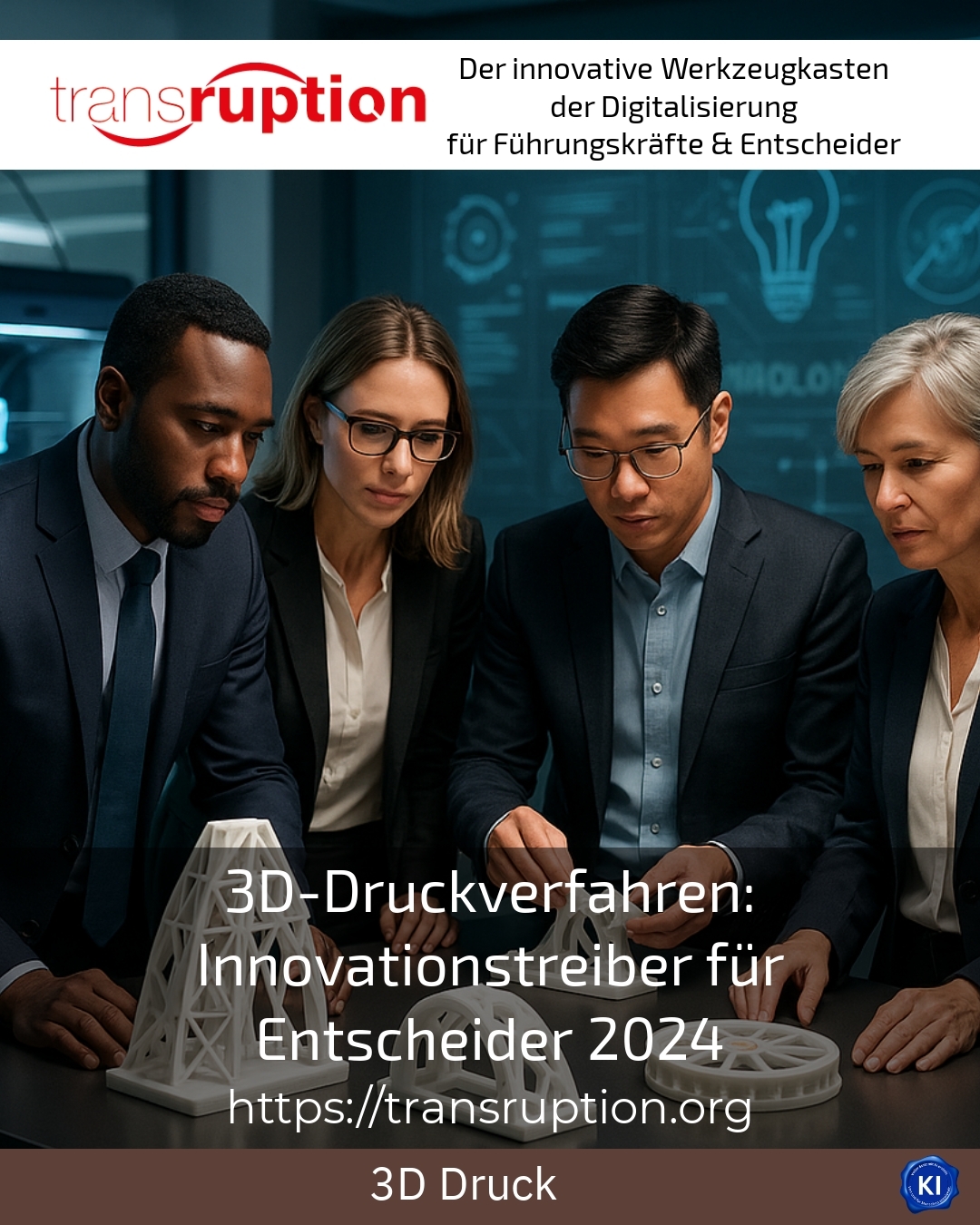The year brings groundbreaking innovations in the world of additive manufacturing. 3D printing processes in particular are increasingly establishing themselves as key drivers of innovation in a wide range of industries. Decision-makers are now faced with the challenge of integrating this technology optimally into their business strategies in order to react flexibly and efficiently to market requirements and secure competitive advantages.
New materials open up a wide range of applications
A decisive advance in 3D printing processes lies in the development of new printing materials. Highly developed metal alloys, biocompatible polymers and innovative composites are available today and expand the range of applications enormously. In medical technology, biocompatible plastics enable the customised production of precisely fitting implants. The aviation industry benefits from particularly lightweight components made of aluminium and titanium, which are also extremely robust. Mechanical engineering is also increasingly utilising high-strength materials for precise tools and functional parts.
For example, a major mechanical engineering company uses 3D printing processes to produce complex control components that significantly optimise previous designs. This has reduced production time and costs by more than 60 %. In the footwear industry, models with variable hardness are created that support individual comfort.
Speed and automation as success factors
Increasing automation is significantly boosting the efficiency of 3D printing processes. Robot integration and AI-controlled processes accelerate printing processes and improve quality at the same time. Software solutions enable sound planning and error detection even before production begins. In clinics, for example, this enables the precise production of customised surgical aids in the shortest possible time.
A practical example illustrates the benefits: A medium-sized company in the electronics industry uses fully automated 3D printing lines for the series production of small housing parts. These are of a higher quality with lower reject rates and at the same time benefit from shorter delivery times.
BEST PRACTICE at the customer (name hidden due to NDA contract)
The introduction of an automated 3D printing process at an international aerospace manufacturer led to a doubling of production capacity and significant material savings at the same time.
Flexibility in product development and production
3D printing processes support fast development cycles by reducing the effort required for prototypes and variants. This enables mechanical engineering to test products at an early stage and adapt them directly if necessary. At the same time, small batches can be produced economically or individualised products can be offered. In the automotive sector, for example, interior components and special brackets are customised in this way.
In medical technology, the processes support patient-specific solutions such as dental models or orthopaedic shoe insoles, which are manufactured on site with high precision.
Sustainability through resource efficiency and reparability
3D printing processes are characterised by economical material usage, as only the material that is actually required is used. This results in less waste compared to conventional manufacturing methods. It also opens up new possibilities for manufacturing spare parts that extend the life cycle of products. For example, older machines can remain in use thanks to additively manufactured components instead of having to be completely replaced.
Sustainable building materials are also used in building technology, for example in the printing of components with environmentally friendly materials. This improves the CO2 balance and enables innovative forms of architecture.
Integration of transruptions coaching for project support
Many decision-makers are looking for support in integrating 3D printing processes into their company processes. This is where transruptions coaching comes in, providing impetus and guidance for complex projects. For example, the consultation addresses challenges in the selection of suitable materials, the development of efficient workflows and strategic integration into production chains.
BEST PRACTICE at the customer (name hidden due to NDA contract)
As part of an international project to implement 3D printing in the automotive industry, transruptions coaching played a key role in initiating internal competence-building processes and achieving the project goals with pinpoint accuracy.
BEST PRACTICE at the customer (name hidden due to NDA contract)
A mechanical engineering company received valuable analyses of which printing processes and materials are best suited to its specific requirements thanks to the modular support provided as part of transruptions coaching.
My analysis
3D printing processes are becoming an indispensable driver of innovation for a wide range of industries. Their flexibility, advances in material development and automation as well as their sustainable potential are creating multiple opportunities. Decision-makers benefit if they provide strategic support for this technology and utilise expert knowledge such as transruption coaching. In this way, processes can be organised efficiently and competitive advantages secured in the long term.
Further links from the text above:
Current and future-oriented: 3D printing 2024
Areas of application for 3D printing
Additive manufacturing trends
Applications with practical examples
Unexpected uses for 3D printing
Most innovative start-ups in the field of 3D printing
Industries with 3D printing applications
3D printing applications overview
For more information and if you have any questions, please contact Contact us or read more blog posts on the topic TRANSRUPTION here.
















